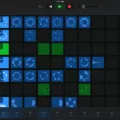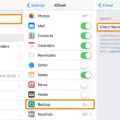Are you experiencing MacBook green screen issues? In this green screen troubleshooting guide, I will tell you all you need to know about diagnosing green screen issues, as well as how to fix the issue if it presents itself. Let’s get into it!
The Causes of the Green Screen of Death (GSOD)
There are several reasons your Mac may show a green screen. It often comes from something known as Flexgate. This is a hardware issue in several MacBook models. When you tilt or flex the screen back, it stretches the video cable attaching the motherboard to the screen. This can cause video playback issues.
Issues with your graphics card or drivers can also sometimes cause this issue. If you are projecting the screen onto an external monitor, there could be an issue with the HDMI/USB cable or the external monitor itself.
Finally, your screen may be old and degraded.
Investigating the Cause of Green Screening When Watching Videos on Mac
An easy way to check if the issue is related to your GPU or is a Flexgate/hardware issue is to connect your screen to an external monitor.
Do you still get the green screen issue when connecting it to an external monitor? Then the issue is related to your GPU or graphics drivers.
If you don’t get the issue with the external monitor, then something is wrong with your screen. Flexgate may be the issue, or the screen may be degraded.
How to Fix a Green Screen by Updating Graphics Drivers
As this could be an issue with your graphics card drivers, update your drivers. Do that by going to the Apple menu and clicking on About This Mac. Then, click on Software Update and check for any available software updates.
Why a Full System Reboot Might Help Fix the Green Screen
Also try rebooting your MacBook. Sometimes, a full system reboot can solve issues that can cause a green screen. Before rebooting your PC, though, make sure that it is up to date by going to the Apple menu > About This Mac > Software Update.
Using Apple Diagnostics to Troubleshoot Your PC
Running an Apple Diagnostics test
You might also want to consider using Apple Diagnostics to troubleshoot your PC.
First, turn off your computer and disconnect all cables, including Ethernet, external keyboards, etc.
If you have a MacBook with an Apple Silicon chip, press and hold the power button or Touch ID button. When the Options screen shows up, release the power button and press and hold Command + D.
If you have a MacBook with an Intel chip, turn on your Mac and immediately press and hold the D key on your keypad. Only release it when you see a progress bar or when asked to choose a language. If D doesn’t work, try pressing and holding Option + D instead.
This will run a diagnostics tool to check for hardware issues. If there are any errors, it will show a reference code. Check this table to see what the reference code means.
If you’re not sure whether your Mac has a Silicon or Intel chip, check this guide.
What to Do When All Else Fails
If you still can’t resolve the issue after updating and rebooting your computer and running a diagnostics test, I recommend taking it to a certified Apple shop for repair services. If your warranty is still valid, you may even be able to get it fixed for free, depending on what the issue is. For issues like Flexgate and LCD screen degradation, there’s really no way to fix it yourself without taking it to a repair shop.
Conclusion
I hope this guide helped you figure out how to fix your MacBook’s green screen issue. It is not a very common issue, and there isn’t always an easy way to fix it without taking it to a repair shop. Good luck!








